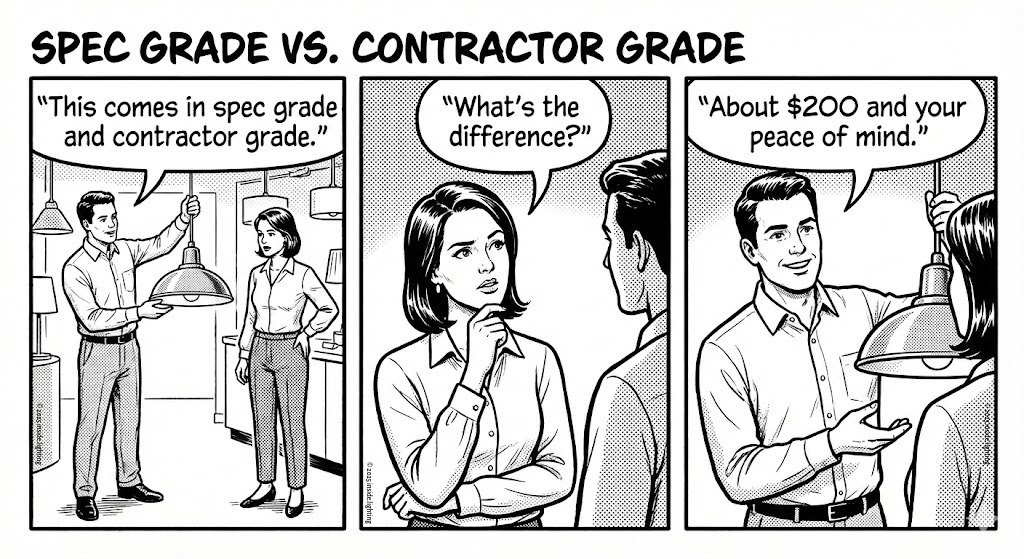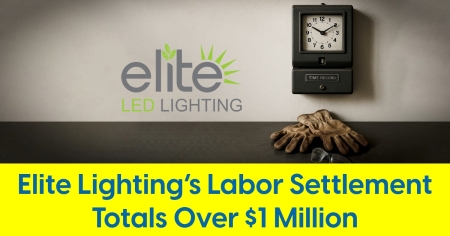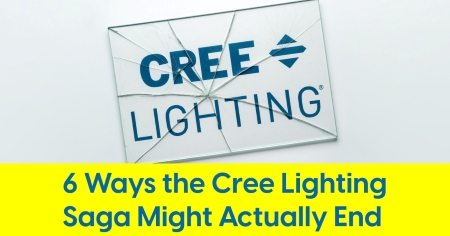May 12, 2025
90-Day China Tariff Relief: Will It Trigger Rush of Orders?

U.S. - China trade deal eases pressure on lighting imports, yet uncertainty lingers
The lighting industry got something it hasn’t had in months: a pause and some predictability. On Monday, the U.S. and China agreed to suspend the bulk of their retaliatory tariffs, a move that brings some welcome breathing room to importers battered by months of volatile trade policy.
But here’s the part that matters: the new tariff rate on most Chinese lighting products is still 30%.
Yes, that’s lower than the 125% to 145% figures the industry was grappling with just weeks ago. But it’s still three times what many companies had priced into contracts earlier this year. And while the new rate is framed as a “baseline,” it comes with a countdown clock — set to expire in 90 days.
The Numbers Beneath the Relief
At its peak, the U.S. was hitting lighting goods from China with compounded tariffs of up to 145%. Monday’s agreement rolls back 115 percentage points of those duties, landing at a flat 10%. But that’s not the full picture. An additional 20% penalty — imposed earlier this year as part of a broader response to the administration’s stance on fentanyl production — remains in force on a wide swath of Chinese goods, including many components used in LED systems.
The result: a 30% total tariff rate that still adds significant friction to pricing models, especially for fixtures with multiple Chinese-made parts.
For lighting companies that source drivers, optics, housings, or finished products from China, the new rate doesn’t erase the pain. It just makes it slightly more predictable — at least for now.
Temporary Stability, Not Resolution
The new agreement includes a 90-day pause on tariff escalation. But it doesn’t offer permanence. In fact, it closely mirrors other short-term suspensions seen earlier this year, when tariffs on imports from Vietnam, India, and Mexico were announced, reversed, or revised — sometimes within days.
What’s different this time is the scale. The U.S. and China have not only suspended recent hikes but also signaled a willingness to continue discussions aimed at broader market access and trade balance.
That’s good news. But it doesn’t solve the fundamental tension: the U.S. lighting industry is still structurally dependent on Chinese manufacturing. And tariffs — at 30% or higher — still shape the economics of that relationship.
A Supply Chain That Can’t Pivot Fast Enough
The hope earlier this year was that higher tariffs would accelerate diversification. In practice, it exposed how little room the industry has to maneuver.
Mexico remains an option, particularly for brands leveraging cross-border assembly. But capacity is limited, and earlier threats of tariffs on Mexican imports reminded everyone how fast that advantage can disappear.
Vietnam and India offer promise — but many suppliers in those regions rely on Chinese subcomponents, and now face tariffs of their own. Even companies with partial U.S. assembly have found that eliminating exposure to China is harder than it sounds.
Will Distributors & Manufacturers Make a Run for It?
The question now is whether the industry will sprint while the track is clear. With tariffs temporarily capped at 30% — a steep discount from the 145% highs of April — some distributors may rush to stock up, hoping to lock in inventory before the 90-day window closes. The logic is simple: better to buy now at 30% than risk waking up in August to another policy whiplash.
Another wildcard may be on the manufacturing side. For years, the industry has leaned heavily on just-in-time inventory models — tight, lean, and optimized for predictability. This isn’t that. So the question becomes: do manufacturers abandon JIT discipline in favor of a short-term stockpile strategy? Do they bet on the certainty of today’s lower tariffs, even if it means tying up capital and warehouse space?
The incentive is certainly there. Compared to the chaos of recent months, 30% feels almost manageable. And if nothing else, the next three months offer something rare: a fixed cost baseline. That alone may be enough to shake companies out of their holding pattern. The only real certainty is that time is running — and those who wait too long may find themselves once again pricing in policy chaos.










